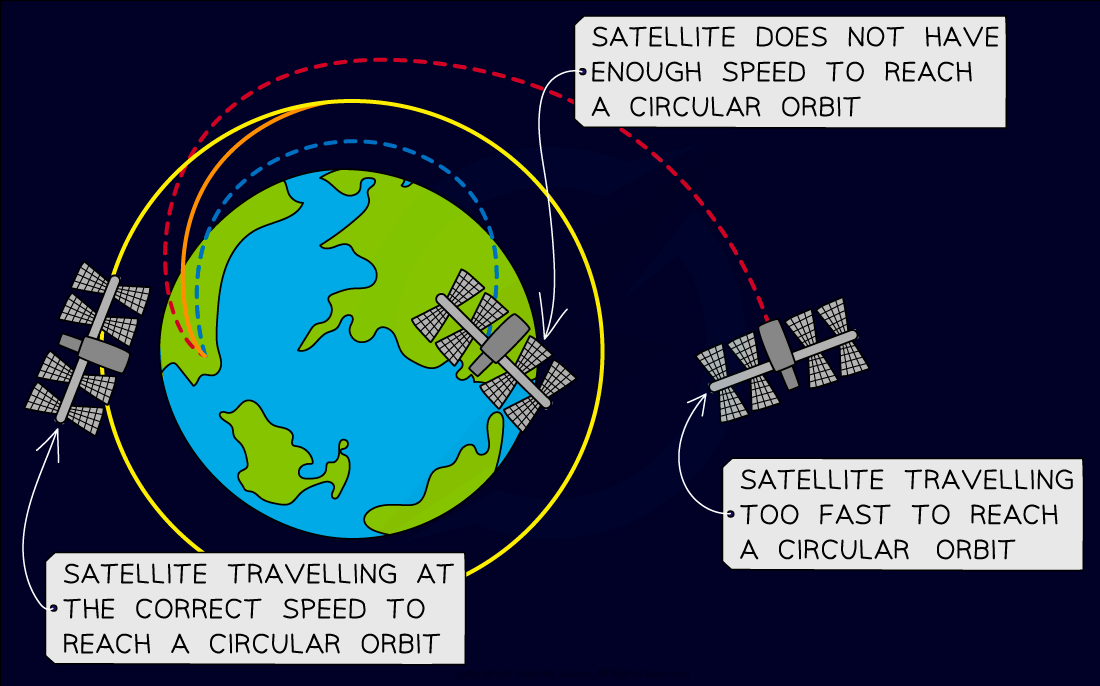Projectile Motion & Satellites (SQA National 5 Physics): Revision Note
Exam code: X857 75
Projectile motion & satellites
A satellite is an object that orbits a larger body
In order for a satellite to orbit a body, such as a star or a planet, there must be a force pulling it towards that body
This is provided by the gravitational force, or weight
Newton's cannonball
Isaac Newton was the first to realise that the gravitational force that causes an apple to fall to the ground is the same force that keeps the Moon (and all satellites) in orbit around the Earth
He imagined firing a cannonball horizontally from the top of a very high mountain:
At low speeds, it follows a curved trajectory and eventually hits the ground, as in projectile motion
If the speed increases, it travels further before hitting the ground
If fired at a high enough speed, it falls at the same rate that the Earth curves away - meaning it stays in continuous free-fall around the Earth
Newton's cannonball thought experiment

Satellite motion
Satellite motion is an extension of projectile motion
The motion of a satellite around the Earth is a combination of two separate motions:
constant horizontal velocity
constant downward acceleration towards the Earth's surface
The combination of these two separate motions acting at right angles to each other is a circular path that exactly matches the curvature of the Earth
This is how satellites remain in stable orbits around the Earth
Satellite in a circular orbit

A satellite needs to travel at a specific speed to maintain a circular orbit at a particular distance (radius) from the object
If the speed of the satellite is too high:
the radius of the orbit will increase, and the satellite will spiral into space
the weight is not large enough to keep it in orbit
If the speed of the satellite is too low:
the radius of the orbit will decrease, and the satellite will move towards the object it should be orbiting
the weight is too large to maintain a constant orbital radius
Orbits of artificial satellites


Unlock more, it's free!
Did this page help you?